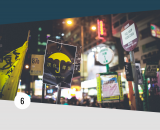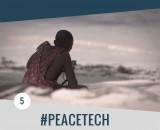Letter from the Editor
Ending violence and moving forward in the fragile social, economic, and political setting that follow a conflict pose challenges to women and men alike, but also create unique opportunities. We dedicate Issue 3 to gender and peacebuilding, exploring how women and men can reconstruct war-torn nations. Our authors include civil society activists, policymakers, educators, students, filmmakers, and philanthropists—people working for change from multiple vantage points. They write from and about Colombia, the Democratic Republic of Congo, Iran, and places in between, affirming a recent quote by Phumzile Mlambo, executive director of UN Women, that “gender equality is also smart peacebuilding.”
Making peace is a process, but there is almost always a formal moment when peace is declared that sets the stage for what comes next. In 2012, looking at eighty-three peace agreements, Desirée Nilsson found that such documents are 60 percent less likely to fail when non-governmental actors and political parties participate in the negotiations. This is as strong a case as any for including women, minorities, and other underrepresented groups in peace processes.
Security Council Resolution 1325, which the United Nations adopted in 2000, focuses specifically on women, peace and security, mandating the role that women can and should play in peacebuilding. It offers global leaders and local communities alike a tool to advocate for inclusion and participation, as Sofi Ospina describes in her article. In another piece in this issue, Valerie Hudson writes: “The treatment of women in a society is a real barometer of the degree to which a society is capable of peace.” It is crucial that we understand the role of women in pushing for social change in Egypt, appreciate the progress toward gender equality in postwar Bosnia and Herzegovina, look at how women photographers are creating change from behind the lens in Iran and the Middle East, and learn about women in public service in Afghanistan.
But the conversation about gender and peacebuilding is actually about inclusion and participation: social, cultural, economic, and political. We cannot talk about including women in peacemaking, peacekeeping, and peacebuilding without being attentive to where this leaves men. Alexa Hassink and Don Steinberg write persuasively about the dangers of leaving men behind in peacebuilding strategies. In every culture and every part of the world women are powerful agents in making and building peace. As we move ahead in 2014, let us create even more opportunities, and support those women and men who strive for positive change.
Warmly,
Jessica Berns
Editor-in-Chief
Building Peace: A Forum for Peace and Security in the 21st Century

